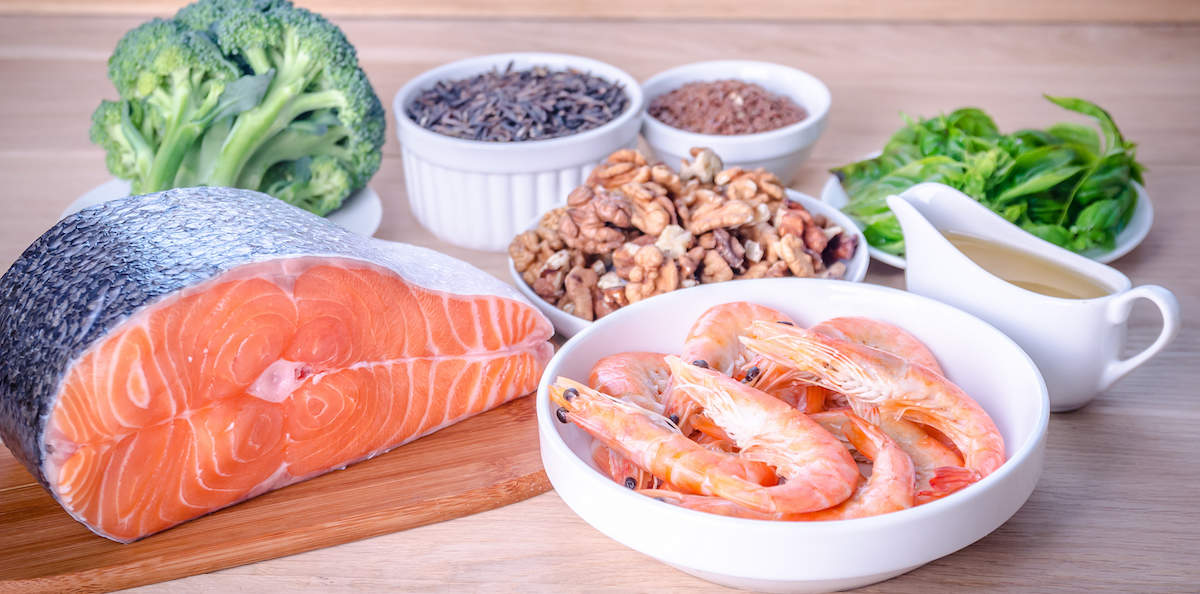Good Fats And Bad Fats For Heart Health

Americans should get about a quarter of their daily calories from fat, according to guidelines from the American Heart Association (AHA) and the American College of Cardiology (ACA). But be careful about the fats you choose, because some are much better options than others.
Some types, like monounsaturated and omega-3 fats, have a beneficial effect on blood lipid levels and may lower the risk of developing or dying of coronary heart disease. Here's what else to be aware of as you decide what to eat every day.
Saturated fat
The most prevalent type of fat in the American diet is saturated fat, which raises total and LDL cholesterol levels in the blood. Saturated fat is present in most animal and dairy foods and in some oils.
To lower your intake of saturated fat, limit your consumption of fatty meats (beef, veal, ham, lamb, and pork), full-fat dairy products (whole milk, cream, cheese and ice cream), and certain vegetable oils and products (coconut oil, palm oil, palm kernel oil, and vegetable shortening).
The AHA/ACC lifestyle management guideline recommends limiting your saturated fat intake to about 5 percent of your total calories. This dietary measure will help reduce your blood cholesterol levels—specifically, LDL cholesterol—and may also help you maintain an ideal weight. (Fat contains more than twice as many calories per gram as protein or carbohydrates.)
As for lowering your intake of dietary cholesterol, found in foods like egg yolks and meat, the guideline says there isn’t enough evidence to show that doing so will reduce your LDL cholesterol levels–a position reinforced in the 2015-2020 Dietary Guidelines for Americans.
Monounsaturated fat
When choosing the fats in your diet, select monounsaturated rather than saturated fats whenever possible. Good sources of monounsaturated fat include olive and canola oils, most nuts (for example, almonds, peanuts, and cashews) and avocados.
When substituted for saturated fat in the diet, monounsaturated fats not only lower LDL cholesterol levels but also help maintain—and even raise—HDL cholesterol levels.
Polyunsaturated fat
This type of fat is found primarily in corn, safflower, and sunflower oils. It lowers LDL cholesterol levels but, when consumed in excess, also can reduce HDL cholesterol.
Omega-3 fat
A type of polyunsaturated fat called omega-3 fat lowers triglyceride levels. It may also reduce the risk of dying of coronary heart disease by preventing life-threatening arrhythmias.
Two specific types of omega-3 fats—eicosapentaenoic acid (EPA) and docosahexaenoic acid (DHA)—have these heart-healthy benefits.
EPA and DHA are found in fatty fish (such as herring, sardines, salmon, trout, and mackerel), fish oil supplements, and prescription medications like Lovaza, which is used to lower very high triglyceride levels.
An omega-3 fat called alpha-linolenic acid (ALA) is present in certain plants such as soybeans, walnuts, flaxseeds, and canola. Researchers are still investigating whether ALA is beneficial to the heart.
The AHA recommends eating fish at least one to two times per week to receive the heart-protective benefits of omega-3 fat. Individuals with coronary heart disease should get 1,000 mg of EPA and DHA, preferably from fatty fish.
You might also consider taking fish oil supplements to reach this goal, but only under your doctor’s guidance.
Omega-6 fat
While omega-3 fats often get the spotlight, another type of polyunsaturated fat called omega-6 is heart healthy as well.
Studies show that people with higher blood levels of omega-6 are less likely to develop coronary heart disease than those with lower levels. In addition, these fats are particularly beneficial to the heart when consumed in place of saturated and trans fats.
The AHA recommends that adults get 5 to 10 percent of their daily calories from omega-6 fat. You can easily achieve this goal by using small amounts of vegetable oil in your cooking and eating a handful of nuts a few days a week.
Trans fat
This type of fat has gained considerable attention in recent years—all of it negative.
Trans fats are found in margarines and other prepared foods made with hydrogenated or partially hydrogenated oils. These hydrogenated oils are produced by the food industry when converting liquid oils into fats that are solid at room temperature and are more shelf-stable.
Studies show that trans fats may be more harmful than saturated fat because they not only raise LDL cholesterol but also lower HDL cholesterol.
The AHA recommends limiting your intake of trans fat to less than 1 percent of total calories. Any product with partially hydrogenated oil, hydrogenated oil, or shortening as an ingredient contains trans fat. Also, be aware that products labeled “trans fat free” can contain a small amount of trans fat—up to 0.5 g per serving.
As of 2018, however, food manufacturers will be banned from using artificial trans fats. The U.S. Food and Drug Administration ordered a phase-out of trans fats in June 2015, giving manufacturers three years to reformulate their products.
Story Credit: https://www.healthafter50.com/heart-health/article/good-fats-and-bad-fats-for-heart-health


